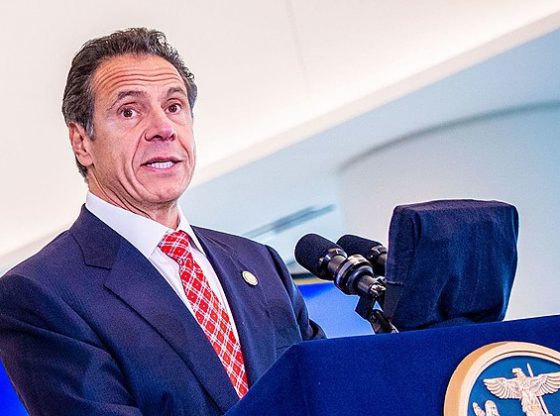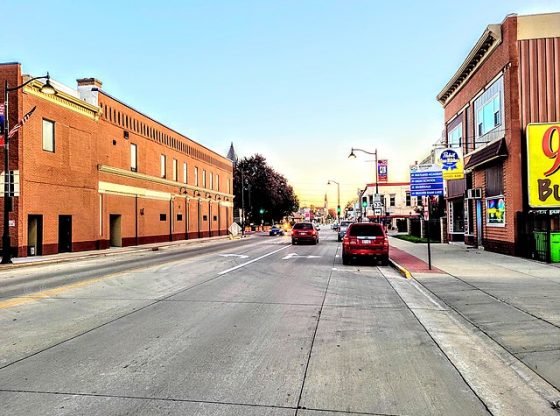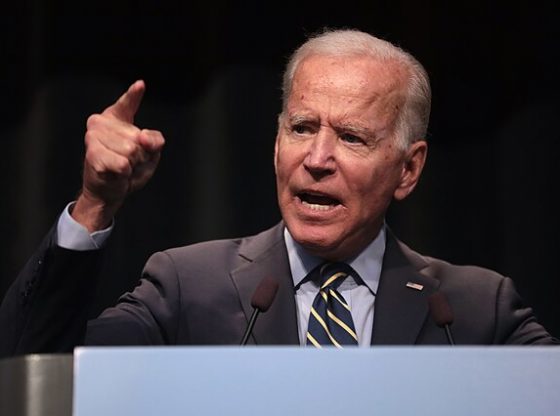The Biden administration has touted its sprawling climate agenda as being beneficial to both minority communities and the working class, yet experts say these groups will bear the brunt of the push for green policies.
The Biden administration’s climate agenda, which Vice President Kamala Harris recently estimated to include $1 trillion in government spending, is designed specifically to prioritize the interests of minority communities while purportedly providing green jobs for blue-collar workers who may be displaced from industrial jobs and emissions-intensive sectors of the economy. However, both demographic groups will ultimately endure the most acute financial stress induced by the green agenda of any population segment, experts told the Daily Caller News Foundation.
In the coming decades, the Biden administration wants to reshape the American power grid, effectively mandate the mass-production and adoption of comparatively costly electric vehicles (EVs), push Americans to use more efficient and often more expensive household appliances and help state and municipal governments craft updated building codes with an eye toward “decarbonizing” buildings. The administration has rolled out subsidy programs or otherwise spent considerable sums of taxpayer dollars to achieve each of these aims, and in many cases applies its so-called “Justice40” guidelines to its environmental spending.
The “Justice40” initiative mandates that federal agencies endeavor to ensure that “40% of the overall benefits of certain Federal investments flow to disadvantaged communities that are marginalized, underserved, and overburdened by pollution,” according to the White House. The initiative effectively instructs federal agencies to put race at the center of certain climate and infrastructure spending programs, even though the government stops short of stating as much explicitly, according to The Washington Free Beacon.
The key pillar in Biden’s climate agenda is the Inflation Reduction Act (IRA), signed into law in August 2022. On the day that the bill became law, the White House promised that the IRA “will bring down energy costs for Black families and create thousands of good jobs, all while reducing climate pollution and ensuring that we have a clean, secure future energy supply.”
“For far too long, communities that have borne the brunt of power plant and industrial pollution have been left out and left behind,” John Podesta, the senior advisor to the president for clean energy innovation and implementation, said in November 2023. “The Inflation Reduction Act and President Biden’s Justice40 Initiative change that by bringing new investment, clean energy, and good-paying jobs to disadvantaged communities.”
But Donna Jackson, the director of membership for the National Center’s Project 21 black leadership network, is not convinced that the administration’s spending and emphasis on “environmental justice” will actually make any difference for the demographics such initiatives are purportedly designed to benefit.
“A top priority for black communities now is home ownership. Green policies make the cost of building homes more expensive,” Jackson, told the DCNF. “The materials are more expensive, and the environmental regulatory requirements add costs that contribute to higher home prices. New and affordable housing developments often are either delayed or completely stopped over environmental impact issues,” which in turn “contributes to artificial housing scarcity that also drives up homes prices.”
“For communities with lower education rates, the green agenda to deindustrialize the country is a financial disaster for minority communities,” Jackson added.
For example, the Environmental Protection Agency (EPA) is seeking to update ambient air quality standards for particulate matter, a move which industrial executives warned in November 2023 would kill jobs and gut America’s industrial capacity if implemented and enforced.
“We’ll create good jobs for millions of Americans … and we’ll do it all to withstand the devastating effects of climate change and promote environmental justice,” Biden said during the 2022 State of the Union Address.
Beyond the costs of buying a home, the administration’s appliance efficiency push will also make the everyday costs of living in one more expensive, O.H. Skinner, the executive director for the Alliance for Consumers, told the DCNF. His organization has calculated that the blitz of appliance-related regulations promulgated by the Biden administration could cost American homeowners more than $9,000 up front.
“In cities where it is really hard to pay rent, when you drive up electricity bills, it is brutal. When you drive up the costs of putting appliances in, that is really brutal,” Skinner told the DCNF. “For people right on the edge of owning a house, these policies are devouring their budgets without giving them a choice. These policies hit families way harder, and they are very painful things to impose on people that don’t need their lives to be any more expensive than they already are because of inflation.”
In addition to steady and good-paying employment, home ownership is a staple of the “American Dream” as a key vehicle for intergenerational upward socioeconomic mobility. Among homeowners, home equity constituted a median of 45% of their net worth in 2021, according to Pew Research Center.
In 2022, the median household income for African-Americans was approximately $52,800 and $62,800 for Hispanic households, compared to $81,000 for white households, according to the Peter G. Peterson Foundation. As of June 2023, the top 10% of American households controlled approximately 70% of overall household wealth, while the bottom 50% held just 2.5% of the country’s overall household wealth, according to the Federal Reserve Bank of St. Louis.
“Higher-cost energy is a regressive tax on the least well-off and disproportionately harms them … By making energy more costly and less reliable, economic opportunities for the least well-off in society will be diminished,” Jonathan Lesser, an adjunct fellow at the Manhattan Institute and the president of Continental Economics, told the DCNF. “The best approach to encourage improved economic circumstances for lower-income residents (of all colors) is to ensure affordable, reliable and plentiful energy supplies. Doing so provides a strong foundation for economic growth, rising wages and so forth.”
“I suspect that members of many environmental groups are comprised almost entirely of wealthy progressives and few minorities,” Lesser continued. “I don’t believe green policies are about improving the lives of marginalized communities. They are about more power and more money for the elites.”
The White House did not respond immediately to a request for comment.
Nick Pope on January 28, 2024
















